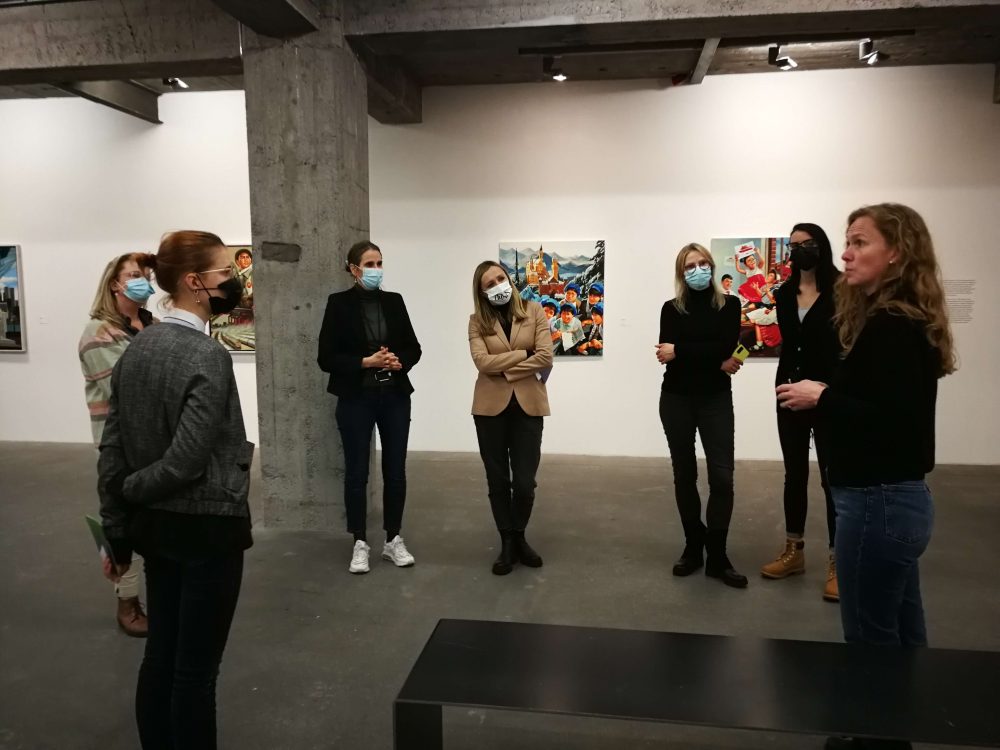Travelling Museum. Meeting Icelandic partners
The project is funded

The project is funded by the European Economic Area and Norwegian Financial Mechanisms (instrument “Development of Cultural Accessibility and Strengthening Cultural Education”).
2021 NOVEMBER

While conducting the project “Travelling Museum: Get to Know Yourself through Art”, November 15–19, we met our project partners from the Reykjavik Art Museum and the Museum of Everyday Life in Iceland.
We visited three departments of the Reykjavik Art Museum and observed their educational sessions as well as the exhibitions, discussed the principles of developing and mentoring the programs, considered the collaboration with educators in the processes of creating exhibitions. We also visited the repositories of the Reykjavik Art Museum where the discussion on creating digital databases, art digitization and its accessibility to public was held.
During the workshops, the ideas of future museums and enhanced accessibility to art were discussed. We learned a variety of creative games and activities that could help children understand the topics of the exhibitions better and involve them into the educational processes. One of those worth mentioning is a scent workshop conducted by the Museum of Everyday Life: all participants were introduced to various scents with their eyes closed, and then they were invited to write down the memories and stories that came while smelling the scent. Finally, sharing of the stories lead to creating poems. This educational method helps to unleash the imagination and brings personal memories back.





We also had the opportunity to compare the children’s exhibitions in MO and the Reykjavik Art Museum as right after the closer of the Lake Full of Stars exhibition in Vilnius we visited the Icelandic Abracadabra, which confirmed our belief in potentiality to convey the concept of modern art to children through right measures.
Our project partners are really experienced in creating travelling exhibitions: for more than 5 years, they have been exhibiting small events arranged in boxes or containers for transportation. Once brought to school, the artwork could be opened, unfolded and displayed to the audience. We were able to compare how this pattern differs from MO travelling exhibitions, which are usually adapted to the spaces visited.
While planning our future work and educational sessions, we had an opportunity to learn from the competent partners leading in the field of human rights and disability inclusion as well as to recognise the innovativeness and usefulness of our own methods by encouraging the hosts to try the Visual Thinking Method and many other schemes conducted in the MO Museum.